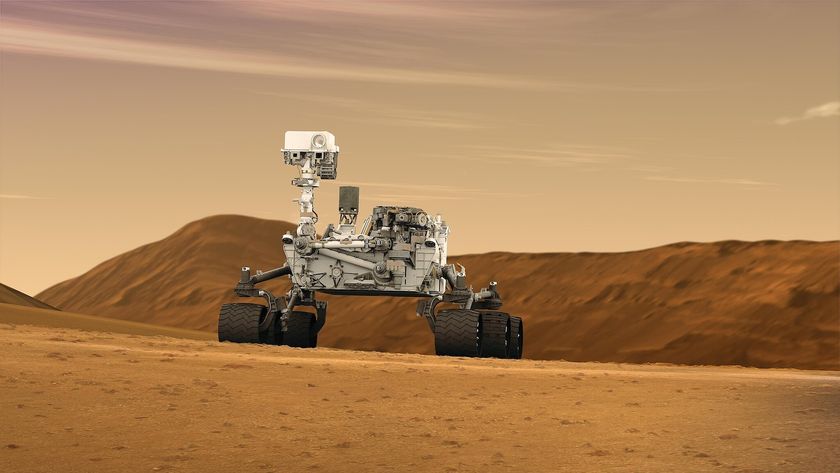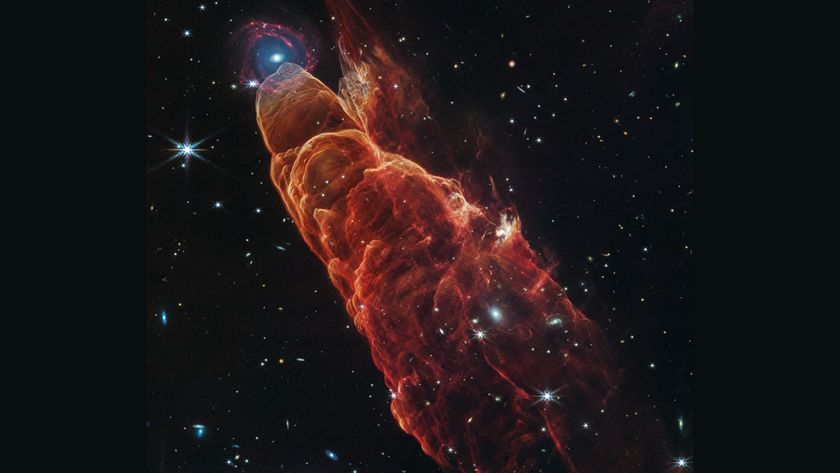Mummified Poop Reveals Ancient Sloth Ate Mormon Tea and Saltbush

SALT LAKE CITY — An extinct giant sloth once used a spacious cave not just as a shelter but also as a massive toilet, leaving droppings on the cave floor whenever nature called. Now, scientists have analyzed the sloth's mummified dung and determined what plants the greyhound-size beast ate most frequently, according to new research.
Chemical analyses of the fossilized poop, known as coprolites, revealed that the ancient sloths primarily chowed down on an orange-flowered perennial shrub known as desert globemallow (Sphaeralcea ambigua), a shrub called Mormon tea (Ephedra) and a drought-tolerant plant known as saltbush (Atriplex), said Ryan Haupt, who is leading the investigation while completing his doctorate in the Department of Geology and Geophysics at the University of Wyoming.
Scientists have known about the coprolites in southern Nevada's Gypsum Cave since the 1930s. The Shasta ground sloth (Nothrotheriops shastensis) lived in the cave at different points, from about 36,000 to 11,000 years ago, Haupt said. [Photos: Slow-Moving and Ridiculously Cute Sloths]
"Radiocarbon dates from the coprolites correlate with periods where the climate was a bit cooler, and since we know that modern tree sloths don't thermoregulate [regulate body temperature] very well, it's possible that these ground sloths were going into the cave to keep warm," Haupt told Live Science.

Dating back to several thousand years ago, indigenous people also lived in Gypsum Cave, Haupt added.
To do the analysis, Haupt needed only a few milligrams of each coprolite. After grinding the small samples with a mortar and pestle, he analyzed the specimens for different carbon and nitrogen isotopes (elements can come in different isotopes, each with a different number of neutrons in its nucleus, but the same number of protons).
Plants that live in dry, hot or otherwise water-stressed environments have evolved strategies to prevent themselves from drying out, such as absorbing sunlight during the day but absorbing carbon dioxide only at night. These strategies also affect the chemical pathways used during photosynthesis, resulting in different ratios of heavy and light stable carbon isotopes in the plants. These ratios work their way up the food chain when animals eat these plants, so by measuring the ratios, Haupt was able to see what plants the sloths chose to eat.
Sign up for the Live Science daily newsletter now
Get the world’s most fascinating discoveries delivered straight to your inbox.
The analysis fits with the saying, "'You are what you eat,' but down to the atomic level," Haupt said.
The new results jive with previous findings that were reached using different methods. For instance, some scientists looked for identifiable plants within the mummified excrement, either under a microscope or based on the plants' DNA, he said. The plants identified in previous studies match the ones Haupt recognized in the isotope analysis. [Sloth Quiz: Test Your Knowledge]

But not all species of extinct sloths left behind coprolites, which makes it difficult to compare the diet of the Shasta ground sloth with that of related sloths. Luckily, this molecular analysis, known as stable isotopic analysis, can also be applied to analyses of sloth bones and teeth, "which is pretty neat," Haupt said.
For instance, the Shasta ground sloth was more of a mixed feeder than other ancient sloths were, including those in the Megatheriidae and Mylodontidae families, Haupt found when he compared the Shasta ground sloth results with already-published values from the bones and teeth of other sloths.
"No one has ever attempted this type of analysis before using sloth coprolites, so we were really excited to see how well it worked," Haupt said.
Timothy Gaudin, a professor in the Department of Biology, Geology and Environmental Science at the University of Tennessee at Chattanooga, who was not involved in the study, said the research is encouraging because it requires only a small piece of the coprolite for analysis.
"In the past, there have been studies on these, but what they've had to do is literally take [the coprolites] apart, pull all of the little plant parts out and try to identify them one at a time," Gaudin said. "And then you end up with no specimen."
The study, which has yet to be published in a peer-reviewed journal, was presented Thursday (Oct. 27) at the 2016 Society of Vertebrate Paleontology meeting.
Original article on Live Science.

Laura is the archaeology and Life's Little Mysteries editor at Live Science. She also reports on general science, including paleontology. Her work has appeared in The New York Times, Scholastic, Popular Science and Spectrum, a site on autism research. She has won multiple awards from the Society of Professional Journalists and the Washington Newspaper Publishers Association for her reporting at a weekly newspaper near Seattle. Laura holds a bachelor's degree in English literature and psychology from Washington University in St. Louis and a master's degree in science writing from NYU.











